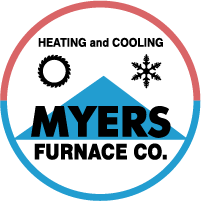Everyone’s always looking to save money on their utility bills, but it turns out there’s a way to keep costs down, even when you’re out of the house.
The secret is your thermostat. By using automatic schedules, you can structure its daily schedule around your personal preferences. This means establishing various temperature settings for when you’re at home, away or even when you’re asleep.
If you’re willing to make these adjustments, you’ll be able to enjoy comfortable temperatures while keeping more money in your pocket. Check out our guide on how your thermostat doesn’t have to use up all your summer spending money:
While at Home
Pretty much whenever you’re home, you want to enjoy a comfortable temperature. It’s only natural to want your thermostat lower in the summer if you’re indoors to appreciate the cool air.
But the ideal temperature for when you’re in your home during the summer is usually between 78 and 80 degrees Fahrenheit. With this adjustment, you’ll keep cool while still lowering your monthly energy bill.
While Out of the House
If you’re setting the temperature for when you are out of the house in summer, it’s extremely common to move the thermostat higher than normal.
If your home is in a shady spot in a cooler climate, you can set the temperature as high as 88 degrees while no one is home before lowering it back to the sweet spot of 78-80 degrees once you’re home again. This way, your air conditioning unit won’t be working overtime to keep an empty house cool.
While Asleep
For a full night’s rest during summer weather, you want a temperature that’s nice and cool. You should try and keep things between 68-72 degrees Fahrenheit. There’s less risk of getting too hot or too cold at some point overnight.
Other Strategies for Lowering Energy Use:
- Smart thermostat installation: Trying a smart thermostat in the summer can lower energy costs by automatically adjusting to your lifestyle and personal preferences. A smart thermostat manages the temperature if you are home or sleeping, before allowing it to get a little warmer when no one is home. With models like the Lennox iComfort, you can adjust the temperature remotely through your smartphone, tablet or laptop. Planning smart thermostat installation in your Belton home can be the simplest strategy for maintaining comfortable, yet energy-efficient temperatures even when you aren’t home.
- Update your existing HVAC system: A high-efficiency HVAC system can save money in the long run. By investing in a more energy-efficient system, your utility bills will be lower because it requires less energy to achieve comfortable temperatures. Air conditioning installation in Belton is only a phone call away, so don’t hesitate to reach out to local pros like Myers Furnace Company who can set you up for success.
- Keep up with AC maintenance: Investing in or ignoring regular air conditioning maintenance in Belton can have a serious effect on your total monthly energy use. With regular cleaning of the coils, checking for damage and clearing air vents of dust and debris, you may notice your HVAC system perform better during day-to-day use.. Higher energy efficiency will also reduce strain on important or delicate components and lowers operational costs, resulting in lower energy usage and subsequently, smaller bills.
- Clean or replace the air filter on a regular basis: Regularly changing the air filters in your HVAC system saves money by improving airflow. When filters become clogged, an AC unit has to work harder, and the added strain may impact the system’s life span and cause breakdowns.
- Confirm your attic is sufficiently insulated: Insulation is a vital part of maintaining an energy-efficient home, securing the hot air outside and the cool air inside over the summer. The North American Insulation Manufacturers Association (NAIMA) recommends that homes in the southern United States should install at least 13-14 inches of insulation, while colder climates do better with 16-18 inches.
- Inspect your air ducts: A leak in the air ducts could increase your energy bills much more than 20 percent, plus it can affect equipment such as your water heater, clothes dryer and other appliances throughout your home. Finding any leaks fast and sealing them can address both concerns.
- Seal all other leaky spots in your home: Finding and sealing any remaining leaks in your home with caulk, foam sealant or weather-stripping can help keep it cooler on hot summer days. It’s also important to check for any gaps around windows, doors and even outdoor fixtures. Taking the time to seal up any leaks now can help you save a lot over time.
